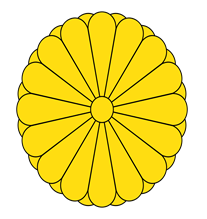Japan: Government
Key Figures
- Chief of State:
- Emperor Naruhito
- Head of Government:
- Prime Minister Fumio Kishida
Overview
- Government Name:
- Japan
- Constitution:
- Adopted: 1946; Contains a pacifist doctrine in Article 9 that is considered to be more binding and explicit than that found even in the charter of the UN. No amendment has yet been made to Japan's constitution.
- Government Type:
- Parliamentary Government with a Constitutional Monarchy

Index of Economic Freedom
Country Risk Rating
Government Branches
| Main Powers | Election Process | Election Cycle 1 | |
|---|---|---|---|
| Executive | According to the constitution, the emperor acts as the "symbol of the state and of the unity of the people". The prime minister holds various constitutional roles such as signing laws/orders, presenting bills, and making reports on domestic and foreign relations to the Diet. |
The emperor is hereditary. The prime minister is appointed by parliament. |
Immediately after legislative elections |
| Judicial | Saiko Saibansho is the highest court of the land and is in charge of holding the constitution. |
The supreme court chief justice is designated by the cabinet, and appointed by the monarch. Associate justices are appointed by the cabinet and confirmed by the monarch. All justices are reviewed in a popular referendum at the first general election of the house of representatives following each judge's appointment and every 10 years afterward. |
10 years |
| Legislative | The national Diet is responsible for making laws, approving the annual national budget, and initiating the drafting of constitutional amendments. The house of councilors is the higher house and can delay the adoption of a budget or treaty. |
The house of councilors has 96 members who are elected through an open-list proportional representation system. The national Diet has 248 members who are elected by plurality vote in single-member constituencies and another 18 members who are elected through a closed-list proportional representation system. |
House of Councilors: 4 years; National Diet: 6 years |
Regional Trade Blocs
International Organization Participation [2]
Environmental Agreements [3]
Tax Information [2]
- Tax Authority:
- National Tax Agency Japan
- Tax Name:
- Consumption Tax
Sources:
- ElectionGuide http://www.electionguide.org/
- EY, http://www.ey.com
- CIA World Factbook, https://www.cia.gov/the-world-factbook/
- U.S. Bilateral Relations Fact Sheets http://www.state.gov/r/pa/ei/bgn/


